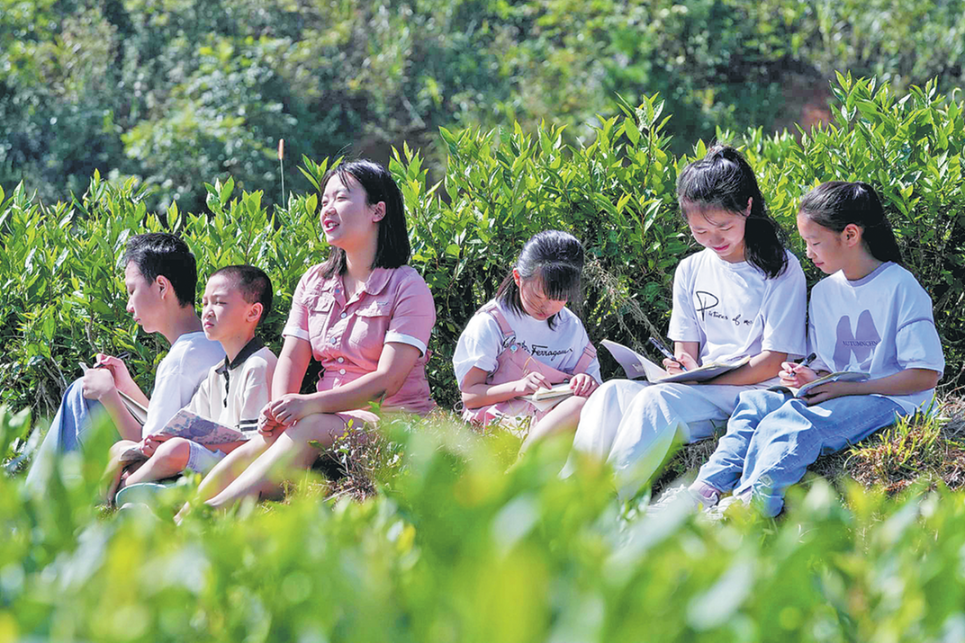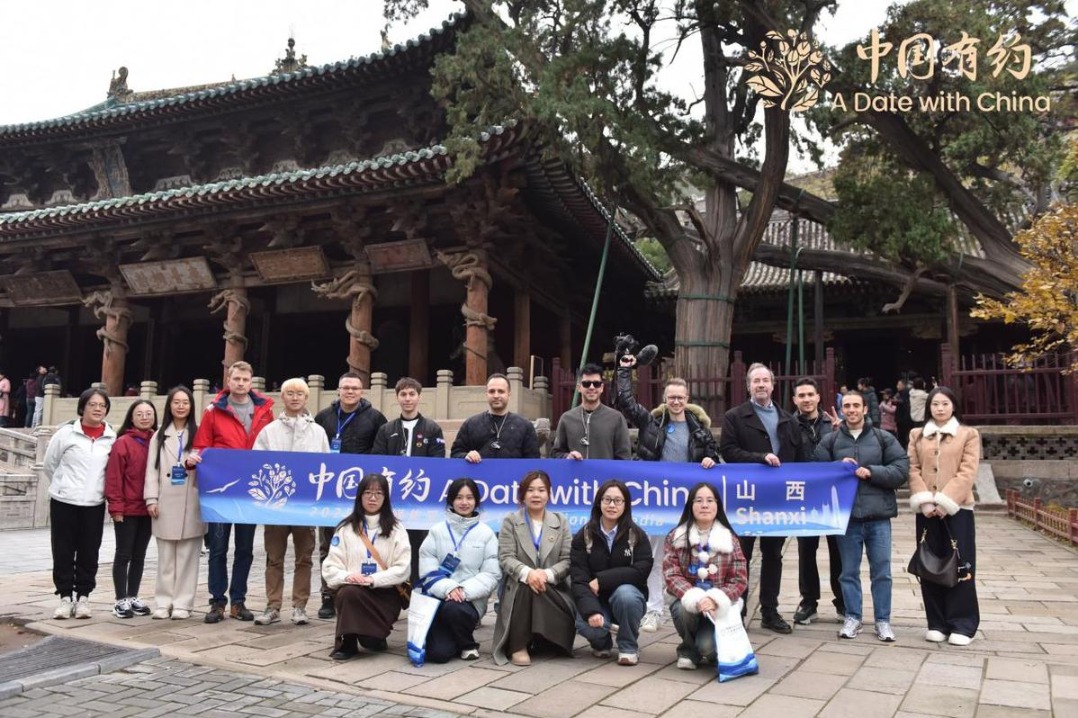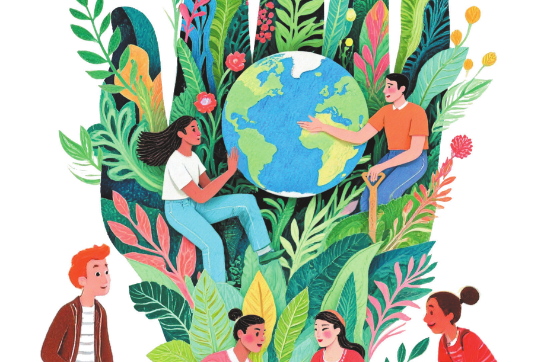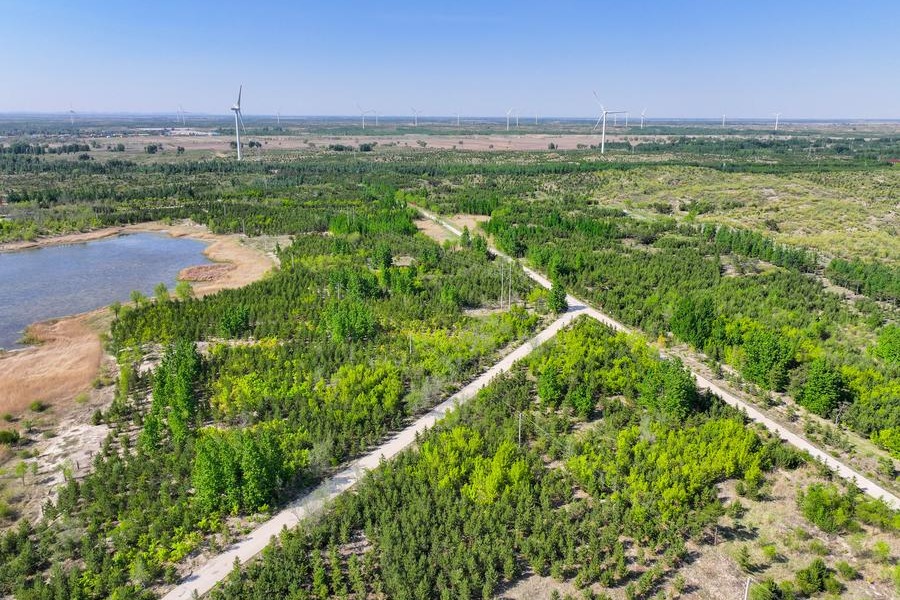How a woman planted green legacy in the desert

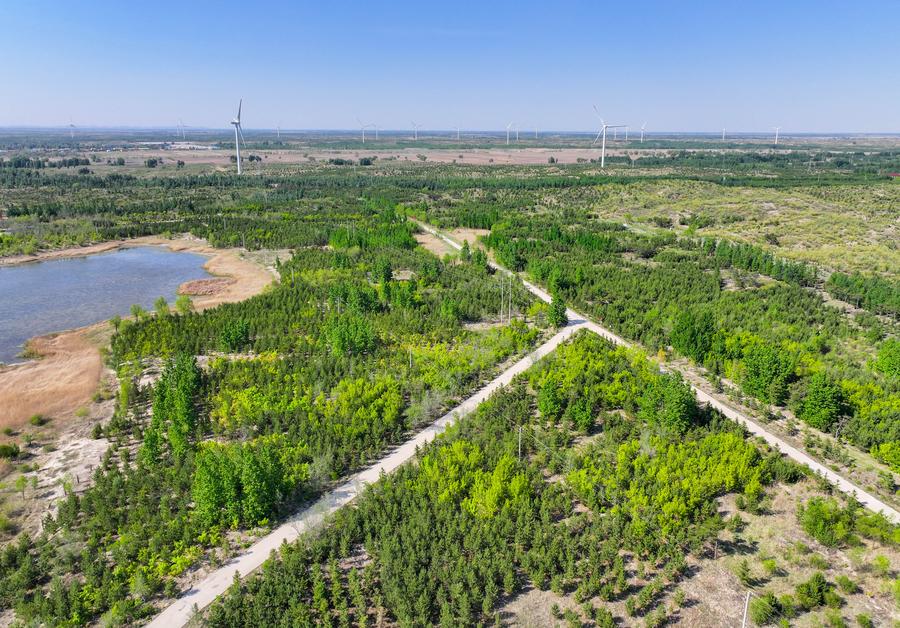
Forty years ago, when Yin Yuzhen arrived at her new home in the Maowusu Desert in the Inner Mongolia autonomous region in northern China, she found herself surrounded by a vast expanse of sand. The new bride's house lay half buried beneath the sand dunes. Gale-force winds howled, bitter cold sliced through the skin, and suffocating heat waves devoured the crops. Many would have fled, but Yuzhen chose to stand her ground. "I'd rather die planting trees," she vowed, "than live buried by the desert."
That vow marked the beginning of a lifetime battle against the desert. The couple bought every sapling through hard labor. Yuzhen's husband did odd jobs — hauling bricks, building houses, even carrying manure — to make more money and get more seedlings planted. Yuzhen herself slept only four or five hours each night, her face and arms covered in abrasions like sandpaper marks.
She wore out 10 pairs of shoes a year, and her shovels and picks were shortened by several inches. Still, she never yielded.
After countless trials and errors, Yuzhen finally managed to tame the desert. She first anchored the soil with shrubs and grasses, shielding the young trees. Then she built a fortress of poplars and pines to shelter fruit trees and crops in the middle. Slowly, the strategy began to work. What was once barren land has turned into a green oasis. Over the past four decades, Yuzhen has reclaimed more than 70,000 acres of desert and transformed them into woodland. This is part of the achievements of China's Three-North Shelterbelt Forest Program, one of the largest ecological projects on Earth. Thanks to the afforestation efforts, deserts that were sources of sandstorms have now become farmland, with fruit trees blooming and birds building nests in the branches.
Yuzhen's story is not just about survival. It is about prosperity born from persistence. By growing roses and organic millet, Yuzhen turned ecological restoration into a source of revenue. Her family ranch now earns over one million yuan a year. She has also helped neighbors cultivate their forests by growing trees and, more importantly, dreams.
A Chinese sister and an American brother
One of the most touching chapters in Yuzhen's story relates to an American. In 2014, Donald Ashton Jones, who was an English teacher in Harbin, watched a documentary about Yuzhen's story and was deeply struck by the image of the woman carrying saplings across the boundless desert. "I want to learn from her," he thought. "I want to change myself — and help change the Earth."
The very next year, Donald — later known by his Chinese name Yin Yifan — traveled thousands of kilometers to meet Yuzhen in Inner Mongolia. She greeted him warmly, calling him her "American younger brother". He joined her team, got up at 4 am, learned to dig deep pits for pine saplings, and soon he was planting 50 trees a day. His clothes were covered in dust, his skin darkened by the sun, and his hands had become rough and calloused. Yet he remained unyielding in harsh conditions and planted more than 2,000 trees.
Their bond went beyond like-minded companions. Donald called Yuzhen "my sister" and gave himself the same last name as Yuzhen's, hence the name Yin Yifan. He brought his wife to see the green miracle in the desert and visited local schools with Yuzhen to inspire a new generation of ecological conservation.
Years later, one day when Donald returned, Yuzhen's grandson ran beside him through the woods, calling him "uncle". A commitment had been passed down from grandmother to grandson, from a Chinese sister to an American brother: keep planting trees and protecting the Earth.
Yuzhen's story has touched not only Americans. People from other countries have come to donate, plant and water trees in the Maowusu Desert. What began as a lonely struggle has now become a shared mission. Her forest stands today not just as China's green miracle, but as a monument to friendship across borders.
China's green miracle, the world's green future
Yuzhen's oasis is part of a much larger picture. China's efforts are reshaping not only the climate of its own but also the rest of the world.
Satellite images show that one-quarter of the world's newly added greenery has come from China over the past 20 years. In 2024, China's forest stock volume surpassed 20 billion cubic meters, while the share of non-fossil energy in total energy consumption rose to 19.8 percent from 15.9 percent in 2020. By the end of June this year, renewable energy made up about 59.2 percent of the country's total installed power generation capacity.
China has met its 2030 targets to expand forest stock volume and installed capacity of wind and solar energy well ahead of schedule. In particular, the combined installed capacity of wind and solar power registered 1.68 billion kilowatts, more than three times compared to 2020, signifying China has fulfilled its goal six years ahead of schedule. China's commitment to environmental protection and sustainable development is consistent and clear.
At the UN Climate Summit 2025, President Xi Jinping announced China's new Nationally Determined Contributions. China will, by 2035, reduce economy-wide net greenhouse gas emissions by 7 percent to 10 percent from peak levels, striving to do better; increase the share of non-fossil fuels in total energy consumption to over 30 percent; expand the installed capacity of wind and solar power to over six times the 2020 levels, striving to bring the total to 3,600 gigawatts; and scale up the total forest stock volume to over 24 billion cubic meters.
The message is profound and inspiring: whether it's planting trees in a desert village or installing solar panels across the world, each effort shares the same vision. Green development is not only China's choice; it is China's contribution to the whole planet. Deserts and dust storms know no borders. With each and every tree planted, each wind turbine built, and each promise kept, China is proving that humanity can create not only oases in the desert, but also a greener future together. It is time for all to join hands for the common good and build a clean and beautiful planet for all.
The author is an international affairs analyst specializing in China-US relations.
The views don't necessarily reflect those of China Daily.
If you have a specific expertise, or would like to share your thought about our stories, then send us your writings at opinion@chinadaily.com.cn, and comment@chinadaily.com.cn.


















